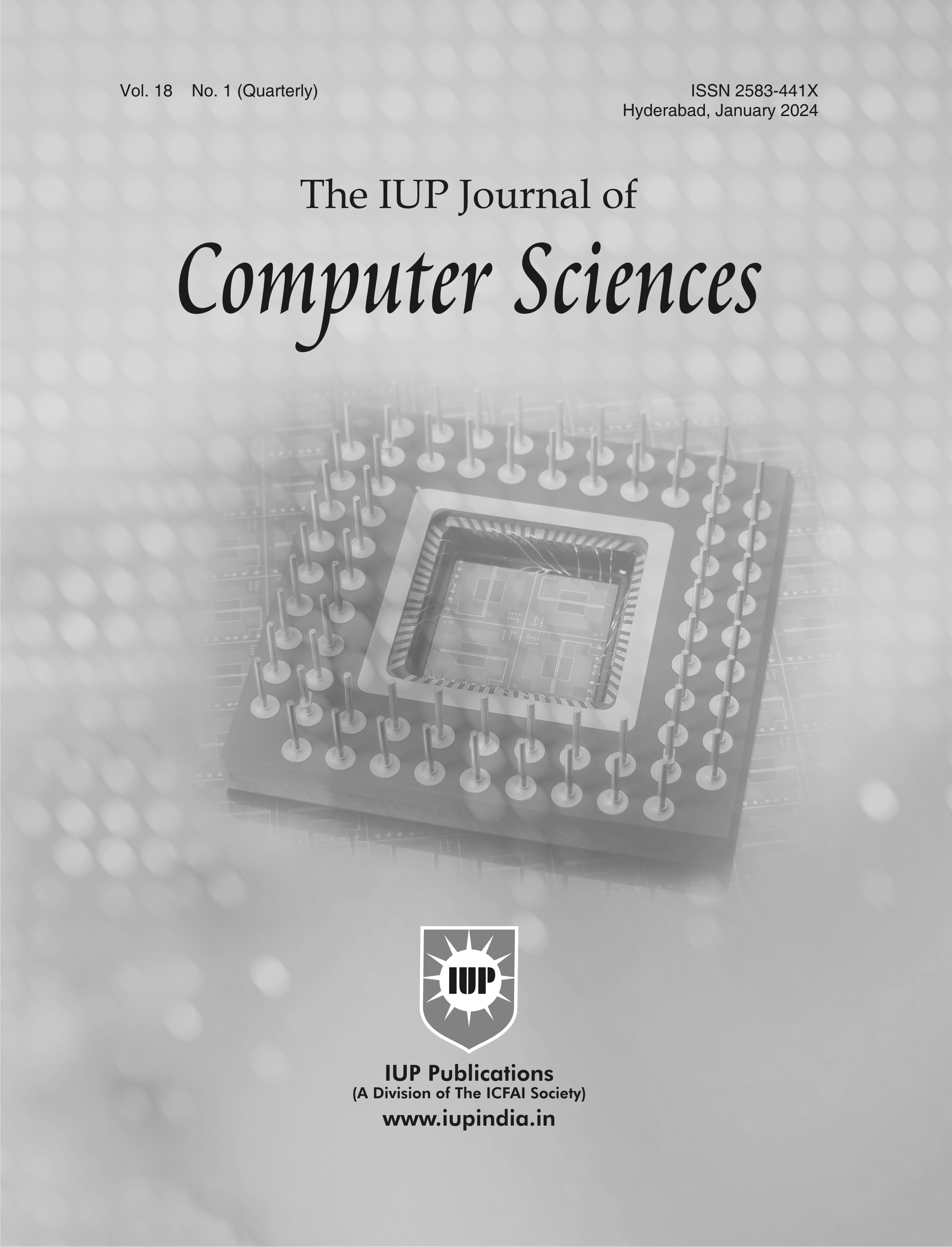
April'19
Welcome to the IUP Journal of Computer Sciences
Focus
The idea of a learning machine may appear paradoxical to some readers. How can the rules of operation of the machine change? They should describe completely how the machine will react whatever its history might be, whatever changes it might undergo. The explanation of the paradox is that the rules which get changed in the learning process are of a rather less pretentious kind, claiming only an ephemeral validity. An important feature of a learning machine is that its teacher will often be very largely ignorant of quite what is going on inside, although he may still be able to some extent predict his pupil’s behavior. This is in clear contrast with normal procedure when using a machine to do computations: one’s object is then to have a clear mental picture of the state of the machine at each moment in the computation. Intelligent behavior presumably consists in a departure from the completely disciplined behavior involved in computation, but a rather slight one, which does not give rise to random behavior, or to pointless repetitive loops. We may hope that machines will eventually compete with men in all purely intellectual fields. […]
Computing Machinery and Intelligence, 1950
Cloud-delivery networks could dramatically improve blockchains’ scalability, but clouds must be provably neutral first. A blockchain is a public distributed ledger
that stores all past transactions and is fundamentally a type of database created and shared by multiple (tens of thousands) nodes connected in a peer-to-peer network. To achieve consensus regarding the correct copy of the database, certain rules about writing to the database must be imposed. By optimizing the transport layer, not only can the throughput be fundamentally scaled up, but the latency could be dramatically reduced. Indeed, the latency distribution in today’s data centers is already biased toward microsecond timescales for most of the flows, with millisecond timescales residing only at the tail of the distribution.
Michael Gallagher, Erick Rengifo and Rossen Trendafilov have presented a four-part paper, “Cloud Computing for MATLAB and R Users. Part I, which described how to configure the virtual machine step-by-step and demonstrated how to use publicly available preconfigured virtual machines, appeared in the previous issue of this journal. This issue includes Part II and Part III of the paper. “Cloud Computing for MATLAB and R Users: Part II – Transferring Data and Cloud Storage“, provides in-depth instructions on using Amazon Web Services (AWS) for transferring data and cloud storage. Obviously, knowledge of AWS is necessary to understand this.
The third part, “Cloud Computing for MATLAB and R Users: Part III – Multicore Virtual Machine Parallel Computing Environment”, presents instructions on harnessing the power of multicore virtual machine parallel computing environments suitable for large dataset and heavy computational needs. It also presents the way to use the storage cloud (S3) along with computing cloud based on Amazon Elastic Compute Cloud (EC2).
Consulting Editor
Cloud Computing for MATLAB and R Users: Part II – Transferring Data and Cloud Storage
Cloud-based computing has tremendous potential for academia in general and researchers in particular. The ability to store, read and manipulate large dataset is increasingly important to be on the cutting-edge of research. While most researchers have extensive programming skills, they generally are not computer scientists. A number of cloud-based, virtual work spaces have been developed which can bring enormous computing advantages over any desktop or laptop. However, the instructions to get up and running in the cloud are often overwhelming, and require a significant investment of time. There is an initial steep learning curve associated with developing a high performance computing environment that several times becomes an obstacle, preventing many from benefitting the most from using the cloud. This paper seeks to demystify the process and get the reader up and running very quickly. Once this initial process is over and the reader is proficient on these issues, performing computational chores that would take days on a desktop can be done in minutes. We next show the way the readers can implement their research using two well-known computer programs, MATLAB and R. Part II provides an in-depth instruction on using Amazon Web Services (AWS) for transferring data and cloud storage.
Cloud Computing for MATLAB and R Users: Part III – Multicore Virtual Machine Parallel
Computing Environment
Part III narrates instructions on harnessing the power of multicore virtual machine parallel computing environments, suitable for large dataset and heavy computational needs. Also, presents guidance to use the storage cloud (S3) along with computing cloud based on Amazon Elastic Compute Cloud (EC2).